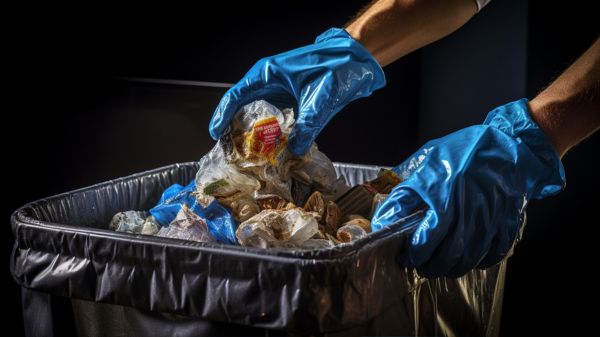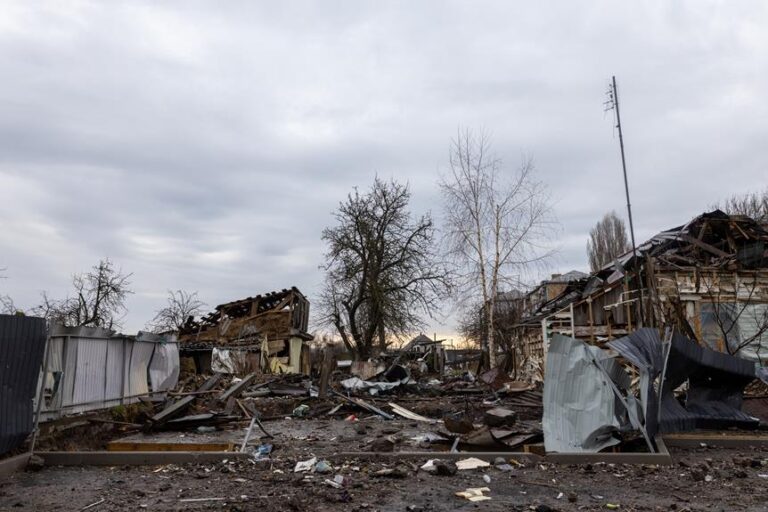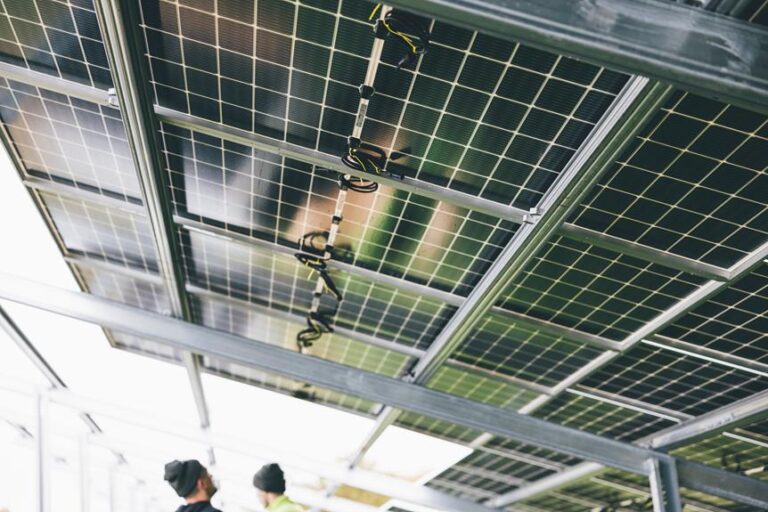Revolutionary LEED Certification Transforms Sustainable Living
Welcome to our exciting journey into the world of LEED Certification! Together, let’s explore the revolutionary impact this certification has on transforming sustainable living.
With LEED Certification, we have discovered a game-changing tool that not only encourages eco-friendly practices but empowers individuals and communities to actively participate in creating a greener world.
So, fasten your seatbelts, as we embark on this exhilarating adventure and uncover how LEED Certification is revolutionizing sustainable living in the most humorous and engaging way possible!
LEED Certification Explained
LEED Certification is a system that transforms sustainable living by recognizing and promoting environmentally friendly building practices.
The LEED certification process consists of various rating systems, such as Building Design and Construction (BD+C), Interior Design and Construction (ID+C), Building Operations and Maintenance (O+M), Neighborhood Development (ND), Homes, and Cities and Communities.
These rating systems provide guidelines and criteria for achieving different levels of certification, including Standard, Silver, Gold, and Platinum.
The LEED certification process ensures that buildings meet stringent standards for energy efficiency, water conservation, indoor air quality, and overall sustainability.
It combines technical rigor with a focus on environmental impact, making it an effective tool for creating greener spaces.
The Different LEED Certification Levels
Achieving different levels of certification in the LEED program signifies a building’s commitment to environmental stewardship and sustainability. The LEED certification process is based on a points system, with buildings earning points in various categories such as sustainable site development, water efficiency, energy and atmosphere, materials and resources, indoor environmental quality, and innovation in design.
The LEED certification requirements are designed to encourage sustainable building practices and reward buildings that go above and beyond standard environmental regulations. The different levels of LEED certification include Standard (40-49 points), Silver (50-59 points), Gold (60-79 points), and Platinum (80+ points). Each level represents a higher degree of sustainability and environmental performance.
Economic Benefits of LEED Certification
As we delve into the economic benefits of LEED certification, it becomes evident that embracing sustainable building practices not only promotes environmental stewardship but also offers significant financial advantages.
LEED certification benefits for businesses are numerous and diverse. Firstly, sustainable buildings have lower operating costs due to reduced energy and water consumption. This translates into substantial savings over time.
Additionally, LEED-certified buildings often have higher rental and resale values, attracting tenants and buyers who value sustainability. Furthermore, sustainable building practices can enhance employee productivity and well-being, leading to lower healthcare costs and higher retention rates.
By implementing energy-efficient technologies and renewable energy systems, businesses can also reduce their reliance on traditional energy sources, thereby mitigating the impact of fluctuating energy costs.
Ultimately, the economic advantages of sustainable building make LEED certification a smart investment for businesses looking to improve their bottom line while contributing to a greener future.
Health Benefits of LEED Certification
By prioritizing the well-being of occupants, LEED certification improves overall health and wellness in sustainable buildings. Here are five ways LEED promotes well-being and enhances productivity:
- Improved Indoor Air Quality: LEED-certified buildings prioritize clean and fresh air, reducing the risk of respiratory issues and allergies. No more sneezing fits during meetings!
- Abundant Natural Light: LEED encourages the use of natural light, reducing eye strain and increasing serotonin levels. Say goodbye to the dark, dreary office and hello to a sunny, happy workspace!
- Noise Reduction: LEED-certified buildings implement soundproofing measures, creating a peaceful environment. No more annoying phone conversations echoing throughout the office!
- Access to Nature: LEED-certified buildings incorporate green spaces and biophilic design, allowing occupants to connect with nature. Just think of it as taking your office for a walk in the park!
- Active Design: LEED encourages physical activity by providing amenities like bike racks, fitness centers, and walking paths. Time to break out those running shoes and get those endorphins flowing!
LEED certification not only saves the planet, but it also saves your sanity and boosts your productivity. Who knew being sustainable could be so good for your health?
The Role of LEED in Green Living
LEED plays a crucial role in promoting green living by offering a comprehensive certification program for sustainable buildings and communities.
The LEED certification standards provide a framework for evaluating the environmental performance of structures, ensuring they meet strict criteria for energy efficiency, water conservation, indoor air quality, and materials selection.
With LEED, urban development can be transformed into sustainable, environmentally-friendly spaces.
By adhering to LEED guidelines, cities can reduce their carbon footprint, enhance waste management systems, and encourage the use of renewable energy sources.
LEED-certified buildings and communities not only prioritize sustainability but also provide economic benefits, such as reduced operating costs and increased property values.
With LEED, green living becomes more accessible and appealing, creating a brighter, greener future for all.
Encouraging Sustainable Actions
Our collective commitment to sustainability drives us to encourage sustainable actions that foster positive change. Incentivizing behavior change and promoting sustainable practices are key to achieving a greener future. Here are five ways we can encourage sustainable actions:
- Offer financial incentives: Who doesn’t love saving money? By providing financial rewards for adopting sustainable practices, we can motivate individuals to make eco-friendly choices.
- Create a supportive community: People thrive when they feel part of a group. By fostering a sense of community and providing resources and support, we can encourage individuals to take sustainable actions.
- Educate and raise awareness: Knowledge is power. By educating people about the environmental impact of their actions and raising awareness of sustainable alternatives, we can inspire change.
- Make it fun: Sustainability doesn’t have to be boring! By incorporating gamification and friendly competitions, we can make sustainable actions enjoyable and engaging.
- Lead by example: Actions speak louder than words. By demonstrating our own commitment to sustainability and showcasing the benefits, we can inspire others to follow suit.
Together, let’s make sustainable living the new norm!
The Impact of Energy Conservation
As sustainability enthusiasts, we consistently emphasize the importance of energy conservation in our collective efforts to foster a greener future. Energy saving initiatives and sustainable energy practices play a crucial role in reducing our environmental impact. By implementing energy-efficient technologies and practices, we can significantly decrease our carbon footprint and contribute to a more sustainable planet.
One of the key benefits of energy conservation is the reduction in energy consumption. This not only helps to lower our utility bills but also decreases the demand for fossil fuels, reducing greenhouse gas emissions. Additionally, energy conservation can lead to improved indoor air quality, as fewer pollutants are released into the atmosphere. This, in turn, enhances the quality of life for individuals.
To encourage energy conservation, it’s important to promote awareness and provide incentives for adopting sustainable energy practices. This can be done through education campaigns, government policies, and financial incentives such as tax credits for energy-efficient upgrades. By working together and embracing energy conservation, we can make a significant impact on our environment and create a more sustainable future.
The Importance of Environmental Responsibility
Environmental responsibility plays a crucial role in shaping a sustainable future for all. As individuals, it’s our duty to be educated about the environment and take action to protect it. This responsibility extends beyond individuals to corporations, which have a significant impact on the environment through their operations. Here are five reasons why environmental responsibility is important:
- Environmental education: By understanding the impact of our actions on the environment, we can make informed decisions that promote sustainability.
- Corporate sustainability efforts: When businesses prioritize environmentally responsible practices, they contribute to a greener future and set an example for others to follow.
- Conservation of resources: Being environmentally responsible helps conserve precious resources such as water, energy, and natural habitats.
- Mitigation of climate change: Taking responsibility for our actions can help reduce greenhouse gas emissions and combat the effects of climate change.
- Preservation of biodiversity: Environmental responsibility ensures the protection of diverse ecosystems and the species that depend on them.
Overcoming Environmental Challenges
Let’s tackle the challenges of creating a more sustainable future head-on. Overcoming barriers to environmental progress requires innovative solutions for sustainable living.
It’s no secret that our planet is facing numerous environmental challenges, from climate change to resource depletion. But fear not, because with the power of technology, human creativity, and a touch of humor, we can overcome these obstacles.
One key solution lies in the revolutionary LEED certification program. By promoting green building practices and sustainable design, LEED helps minimize our environmental impact. From energy-efficient buildings to water conservation strategies, LEED provides a roadmap for a more sustainable future.
Together, we can break down the barriers and pave the way for a greener, brighter tomorrow. So let’s roll up our sleeves, put on our thinking caps, and get ready to conquer the challenges that lie ahead.
Embracing a Sustainable Future
We are committed to embracing a sustainable future by implementing innovative solutions and adopting environmentally friendly practices. In order to achieve sustainable development, we recognize the importance of renewable energy solutions. Here are five key ways we’re taking action:
- Investing in solar power: We’re harnessing the sun’s energy to power our homes and communities, reducing our reliance on fossil fuels.
- Implementing energy-efficient technologies: By using smart thermostats, LED lighting, and energy-efficient appliances, we’re minimizing our energy consumption and carbon footprint.
- Promoting sustainable transportation: We’re encouraging the use of electric vehicles and providing charging stations to reduce emissions from traditional vehicles.
- Reducing waste and promoting recycling: We’re implementing waste reduction strategies and promoting recycling programs to minimize landfill waste and conserve resources.
- Advocating for sustainable practices: We’re actively engaging with policymakers and advocating for sustainable practices at a local and national level.
Conclusion
LEED Certification is like a guiding light, illuminating the path towards a sustainable future.
It empowers us to build and live in harmony with our environment, like a conductor guiding an orchestra towards a harmonious symphony.
By embracing the principles of LEED, we can create a world where buildings and communities aren’t just structures, but living, breathing entities that contribute to the well-being of our planet.
Let’s embrace this transformative certification and pave the way for a greener, more sustainable tomorrow.






